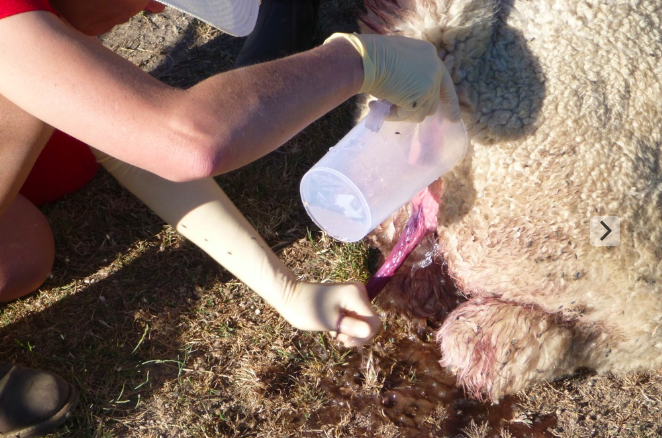If you spot an alpaca having trouble giving birth:
- Observe the female quietly from a distance for 5-10 minutes to see if she is progressing and more of the cria appears. If so, let her give birth without assistance.
- If the female appears to be in difficulty, call your veterinarian for assistance and bring the female into a clean, dry, grassy yard.
- In the event you think you can assist the female, get a bucket of warm water with added disinfectant like iodine or chlorhexidine, a clean litre jug with a hook handle to hang on side of bucket (see photo), and some clean, water-based, obstetrical lubricant (not the stuff that has been lying around in the shed with the lid off and is now full of flies and dust). Move the female to a confined, clean area. Use the jug to dip into the bucket and pour over the back end of the female to remove dirt from around the perineum and cria. Use the jug to dip into the bucket and wash your hands and arms in the jug, then tip out remaining water. Repeat washing hands in jug until hands are clean. Use of long gloves is a good option. Apply clean lubricant to your hand and arm/glove and assist cria delivery. Good hygiene will minimise post-partum infections and maximise fertility at subsequent matings. Wash hands and arms well again after delivery.
- If you cannot deliver the cria within 5 minutes, see point 2 and call your veterinarian. The longer you intervene without success, the more likely the cria will die and/or you will traumatise and introduce infection into the reproductive tract and cause long term damage to the uterus, cervix and/or vagina (think infection, scarring and fibrosis and permanent infertility).
- Never let the sun set on an alpaca trying to give birth. Alpacas usually give birth in the morning. If in difficulty in the late afternoon/evening, intervene and call your vet.


